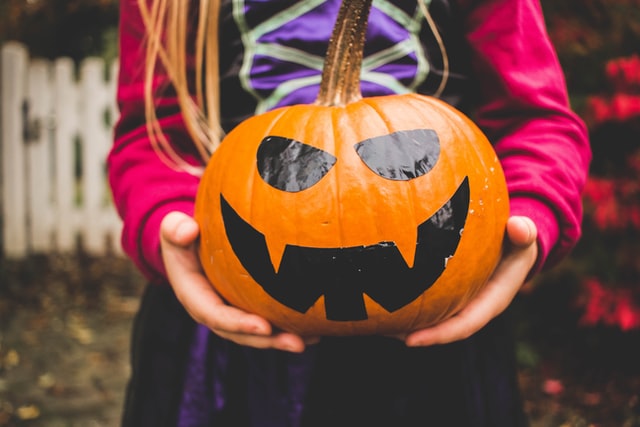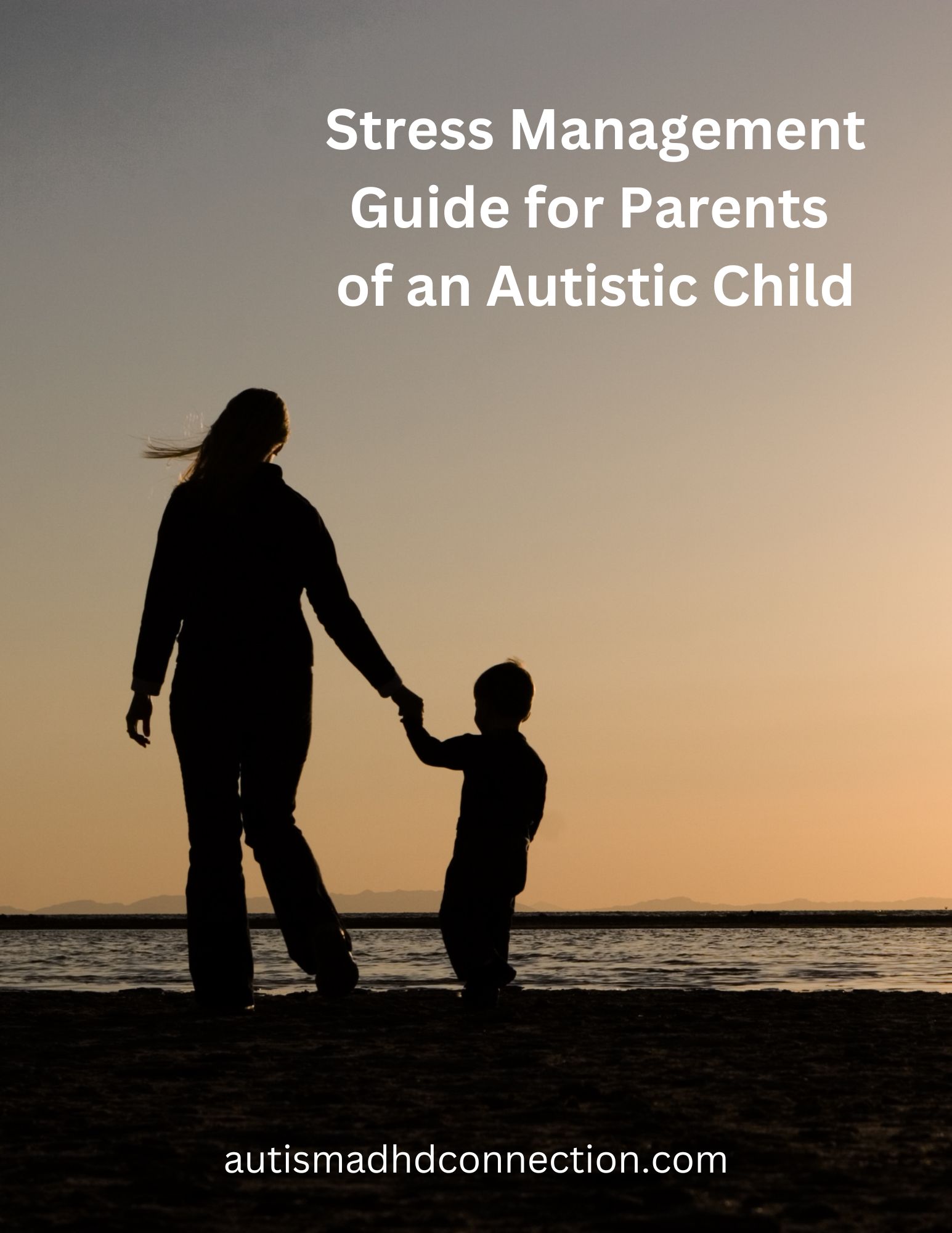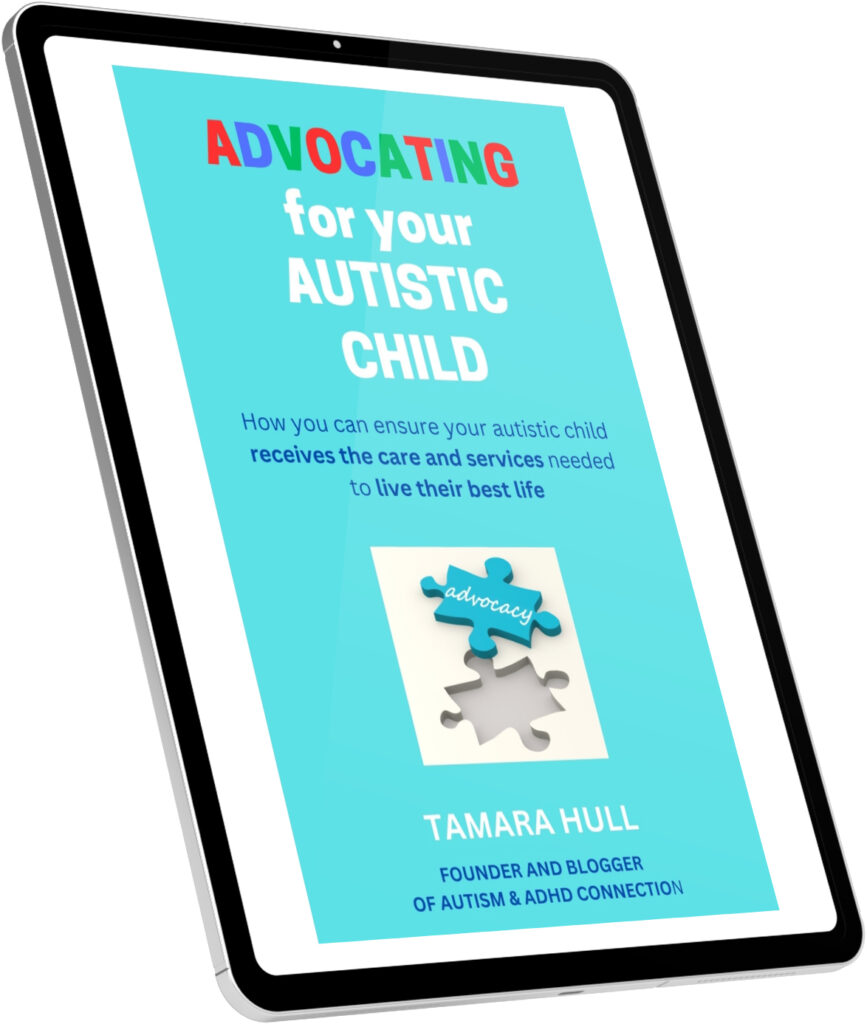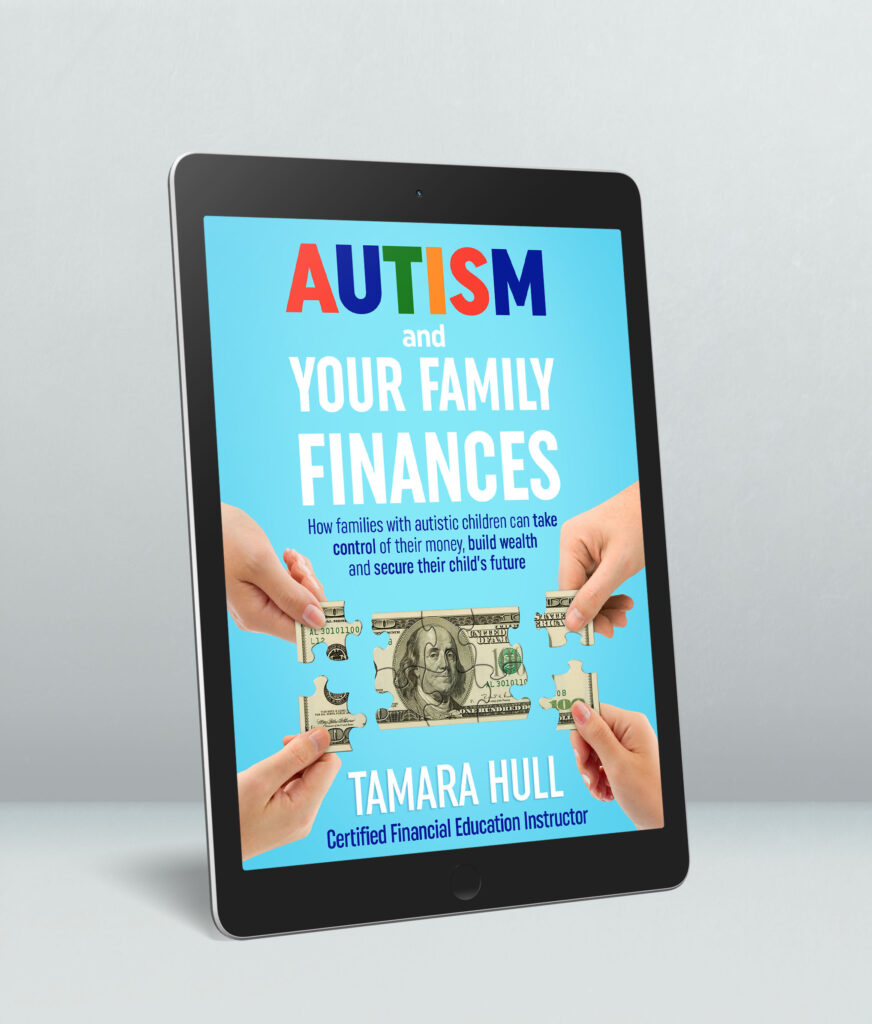October in the United States usually means the kick-off of the holiday season: Halloween, Diwali, Thanksgiving, Kwanzaa, Hanukkah, Christmas and New Year’s. For many kids (and adults), this is the best time of the year. Halloween can be both fun and scary for children, especially those on the autism spectrum. So how can you make Halloween enjoyable and not stressful for your child who has autism?
Halloween is our second favorite holiday in our house. (It is second only to Christmas!) Our son J and his brother both love the Halloween decorations, scary movies and costumes for trick-or-treating. They both really love the candy! Now that J is a teenager, he loves going to haunted houses. For him, the scarier, the better. One of J’s friends who also has autism really loves all things Halloween, so it was always fun to get together with their family to celebrate! We enjoyed a few years of trick-or-treating together and visiting the haunted garage in their neighborhood.
How can you make Halloween fun and safe for your child with autism? Below are 26 tips to help you.
Fun activities at home

1. Consider a social story about Halloween before the holiday begins
If your child is younger or is older but has a hard time with Halloween, consider one or more social stories to talk about Halloween. These can be about Halloween for autism in general, trick-or-treating, going to a costume party, wearing costumes and even carving pumpkins.
2. Use fun instead of scary décor if your child is scared of Halloween creatures
Some décors may be too scary for your child if they are frightened by witches, monsters and ghosts. If so, choose fun décor instead that focuses on pumpkins, cute creatures and other fall decorations.
3. Read fun Halloween stories throughout October
When my kids were younger, one of the highlights of Halloween was going to the library and checking out holiday books to read. Take a trip to the library and see what fun Halloween books your library offers! Reading is one of the best things you can do for any child!
4. Make Halloween crafts and play fun Halloween kid games online
If your child enjoys making crafts, have them make some Halloween ones that you can even use as home or outside décor. Check out these 100 Halloween craft ideas.
Your child also may have fun playing free online Halloween games.
5. Watch fun Halloween movies as a family
One of our favorites is to watch fun Halloween movies throughout the month of October. We love (affiliate links) “It’s the Great Pumpkin, Charlie Brown,” “The Addams Family,” “Hocus Pocus,” “Casper,” and “Hotel Transylvania.” If your child can handle some suspense, the “Goosebumps” shows (affiliate link) may be a good choice too.
Comfortable costumes
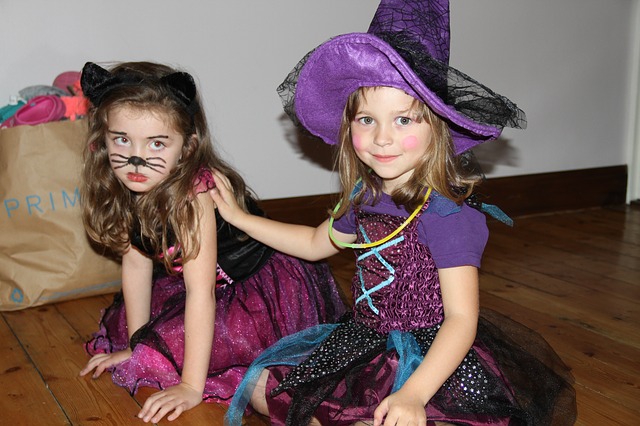
6. Keep sensory issues in mind when planning costumes
Halloween costumes aren’t always made out of the most comfortable fabrics. They may be itchy and scratchy and have awkward décor hanging on them. When choosing a Halloween costume for your child with autism, keep in mind their sensory issues. You may even want to try putting butterfly or bat wings over their regular clothes or have them wear kitten ears or a fun hat or t-shirt as their costume.
7. Try on and practice wearing Halloween costumes before trick-or-treating
Your child should definitely try on their costume and practice wearing it before trick-or-treating or a costume party. Of course, if your child is like my son J when he was younger, they may love it and never want to take it off 😊
Trick-or-Treating

8. Take them to a community activity or school festival where they are comfortable
If the idea of trick-or-treating at homes where they don’t know the people scares your child, opt for a different activity. If your church or other organization that you are involved with offers a trunk-n-treat or Halloween event, plan to attend that. Some schools have fall festivals, and your child may prefer to go there.
9. Start trick-or-treating at a neighbor’s house who you know
Our son J is very outgoing, so he wasn’t scared of trick-or-treating at all. Your child may be shy and apprehensive about meeting new people. Every child is different. Starting at homes of neighbors who you know may be a great option for trick-or-treating. Our tradition became for us to visit our neighbors across the street first every year. They always put together fun little treat bags for each of our boys, and they loved them.
10. Practice saying “trick-or-treat” and “thank you”
If your child is new to trick-or-treating, have them practice saying “trick-or-treat” and “thank you” so they know what to do. Consider using a social story if you think that will help.
11. Use “trick-or-treat” cards if your child is non-verbal
If your child has difficulty communicating verbally, you can use trick-or-treat cards. You can have your child hand a card to the person giving out candy, or you can do so on behalf of your child.
12. Make a safety plan for trick-or-treating
Make sure you plan for safety for trick-or-treating. Carry flashlights and put reflective tape on your child’s costume. Also, have at least one adult (preferably two) walk with your child. It may be best to start trick-or-treating while it’s still light outside at the beginning of your community’s trick-or-treat time. If your child tends to elope, make sure you are holding their hand or have another plan in place to keep them from running from you. You may want to consider a bracelet or other identification with contact information on them in case they get lost.
13. Trick or treat with friends
Trick-or-treating with friends can be a lot of fun for both your child and you. We usually ended up with a few friends walking along, but some years we planned it beforehand and made a fun evening for our families. My friend and I still laugh about two particular years of trick-or-treating. One year, it was so cold that it was snowing while we were out. Another year, it was stormy, and we had a tornado watch in effect. Even through the wind and light rain, we still made some rounds to nearby homes during a lull in the weather, so the night was not completely lost to our kids.
14. If you are trick-or-treating in a new neighborhood, do a walk-through beforehand
If you live in a rural area where you will be going into a neighborhood nearby or will be trick-or-treating with friends in a new area, do a walk-through of the neighborhood beforehand. This can help your child become familiar with the new surroundings and enjoy the activity more.
15. Should you use a blue pumpkin?
A few years ago, blue treat pumpkins were introduced for kids on the autism spectrum to use to indicate that they have autism. This is so people would know and not expect them to say “trick-or-treat” and “thank you.” The blue pumpkins have become a bit controversial. Some parents believe kids with autism shouldn’t have to carry them, and that people giving candy should just give out the candy even if the child doesn’t say what is expected. Other parents like the use of the blue pumpkins. As with everything else, do what you think is best for your child and family.
Candy and Party Food

16. Remind your child not to eat candy until you’ve checked it and given permission
As always, safety is first. Make sure to remind your child not to eat any candy until you have a few moments to look through it. Also, many parents prefer to let their kids eat only so much at a time. With my kids, if I didn’t have some limits on how much they could eat on Halloween night, they would have eaten until their tummies hurt 😊
17. Consider bringing your child’s favorite food to a party
If you will be attending a Halloween party, consider bringing a couple of your child’s favorite snacks. You can then guarantee there will be some food there that they will want to eat.
18. Be mindful of dietary limitations
Whether your child eats gluten-free, has food allergies or other dietary limitations, be mindful of those when attending a Halloween event or when your child is choosing candy from a bowl. Our son J has a food allergy, and he was great about advocating for himself and having people help him find candy that he could eat.
Giving out candy
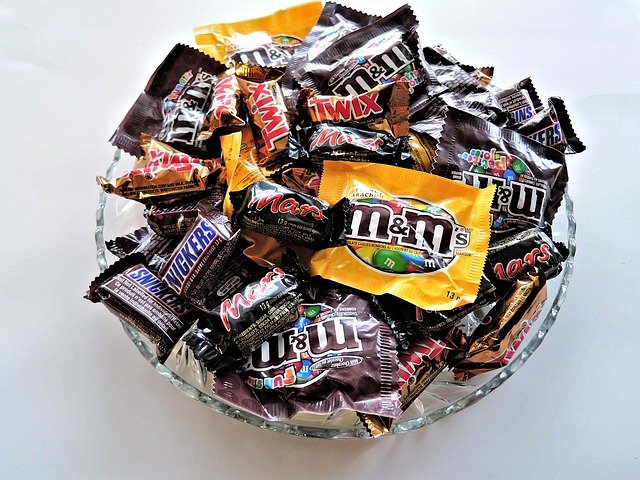
19. Have your child practice giving out candy
If trick-or-treating is not your child’s favorite activity, maybe they would prefer to hand out the candy. Our kids loved doing both! We would trick-or-treat early, and then come back to our house to hand out candy to others. If your child is new to it, have them practice so they will know how many pieces to give each child and how to hold the door open while they do so. Or even sit on your front porch or in the front yard to greet trick-or-treaters. It’s fun to people watch during trick-or-treat time!
20. Leave candy in a bowl on your porch if the activity is too much for your child
If handing out candy is too much for your child and the constant ringing of the doorbell bothers them, you can either opt out of trick-or-treating participation or just leave a bowl of candy on your front porch.
21. Too much candy? Look for a local dentist or other organization that offers a candy buyback program
Did your child receive too much candy during trick-or-treating? Google to see if a local dentist or other organization is doing a candy buyback program and sending candy to military troops right after Halloween. We did this for a few years at one of our local dentist offices. It was a fun way to get rid of the excess candy – the kind they didn’t like or couldn’t eat because of food allergies. The dentist office offered fun activities such as writing letters and drawing pictures for the soldiers, raffle prizes and free goodie bags. They also paid about $1 per pound for the candy buyback. It became an after-Halloween tradition for us.
Reducing Anxiety

22. Help your child through feelings of anxiety
Your child may feel anxious due to the changes in their schedule, addition of activities and even the decorations that make your home feel different. Help alleviate their stress with social stories, favorite activities and sensory assistance.
23. Be mindful of your child’s sensory needs
With all the bright colors of Halloween decorations, itchy costumes and loud noises, Halloween can give some children with autism sensory overload. Watch for any sensory problems during this season and take steps to minimize them. While your child may enjoy trick-or-treating, they still may want to wear a weighted vest to feel more comfortable or headphones to minimize noise levels.
24. Watch for signs of a meltdown
With sensory overload usually comes meltdowns. Watch for signs that your child is becoming overwhelmed and take steps to reduce it. If a meltdown occurs, do your best to stay calm to help your child through it.
25. Stick to your child’s routine as much as possible
As with any holiday, you may have more activities to attend or do during this time. However, sticking to your child’s routine as much as possible will help prevent sensory overload, meltdowns and feelings of being uncomfortable. Instead, try to fit in these activities around your child’s routine when possible.
26. Know your child’s limits
Halloween is supposed to be fun. Know your child’s limits. If they won’t enjoy a particular activity, then skip it. If they don’t like Halloween at all, you may make a decision as a family to forego this holiday yourselves. It’s okay. Do what is best for your child and your family.
Do you have some more tips to share for Halloween for autism? If so, we would love to hear them. Just share them in the comments section below so that we can encourage and support one another! Happy Halloween to all!

